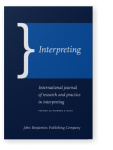Vol. 22:2 (2020) ► pp.238–261
How much noise can you make through an interpreter?
A case study on racist discourse in the European Parliament
The paper employs critical discourse analysis for a pragmatically-oriented exploration of several racist statements by a Polish Eurosceptic Member of the European Parliament (MEP), Janusz Korwin-Mikke. The original fragments in English or in Polish were extracted from a larger corpus containing all the plenary contributions of the MEP (2014–2018). They are compared with their interpretations into German and, respectively, either Polish or English. The qualitative analysis reveals that the approach to racist statements by interpreters is inconsistent, both across all the three language units and when the output of each is considered separately. In the analysed interpretations, there is evidence of preservation of the pragmatic effect, slight/radical mitigation, and strengthening. Slight mitigation seems to be the most popular option. The interpreters tended to tone down anthroponyms functioning as racial slurs and to omit implicit racism.
Article outline
- Introduction
- 1.MEP Janusz Korwin-Mikke and his plenary discourse
- 2.Racist discourse
- 3.Empirical study
- 3.1Material
- 3.2Methodology
- 3.3Qualitative analysis
- 4.Conclusions
- Notes
-
References
